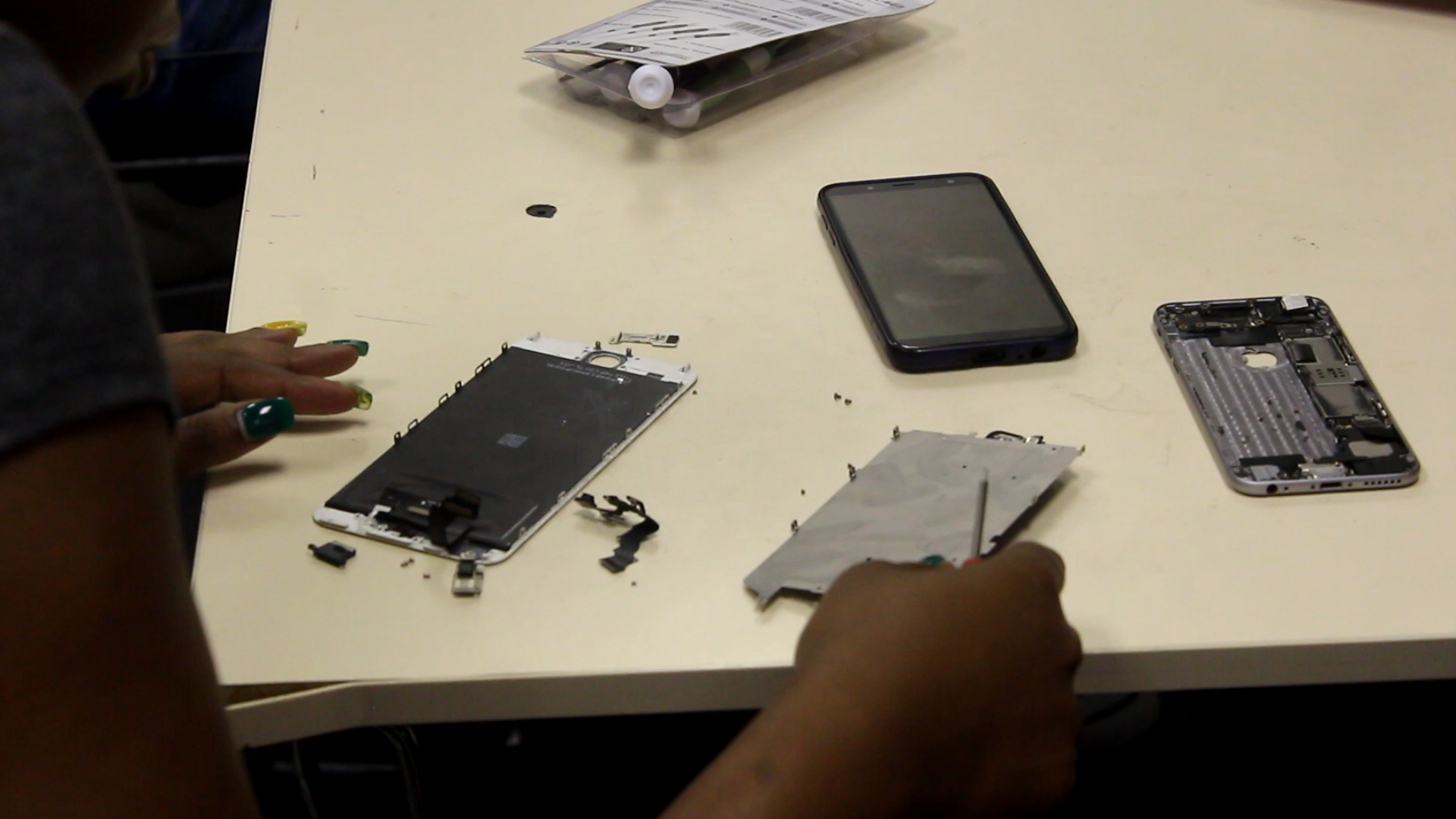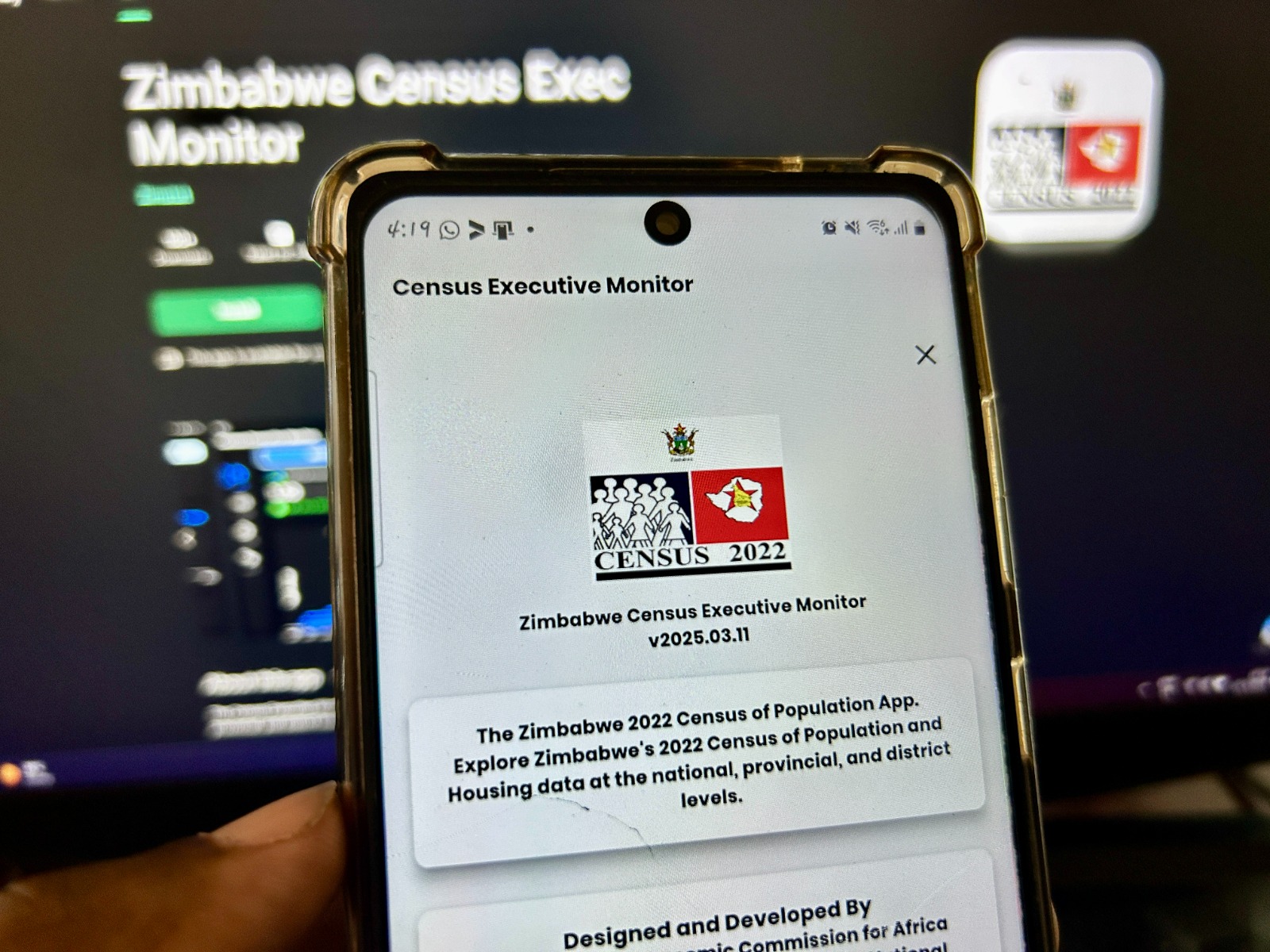Did you know that Samsung makes the displays on iPhones and Sony makes the cameras used by most top-tier smartphones? Heck, the Snapdragon 8 Gen-1 series of processors, the most potent Android processors out right now were being made by Samsung. Smartphone manufacturers or OEMs do not manufacture every component found in their phones in-house but instead, do design work and outsource production of some components to different suppliers. And for some they just buy them off the shelf. To understand why, we need a little refresher on how the tech world works.
We’ve been partnering with Sony for over a decade to create the world’s leading camera sensors for iPhone. Thanks to Ken and everyone on the team for showing me around the cutting-edge facility in Kumamoto today.
Tim Cook – Apple CEO
Early adopters turn into experts
Back in the day when electronics started, different companies decided to specialize in different fields. As they put money into research in the tech they developed, they also collected patents for the tech they developed. The patents part is its own topic but picture this. Companies like these spent decades investing time and money into improving the tech they produce and more crucially fine tuning the process they use to make the tech.
These early adopters got so deep into the tech they were making and are so far ahead to the point that it is monumentally more expensive for anyone to start now, catch up and still produce the same products at a competitive price. Also, patents protect these early adopters from the risk that any other person can replicate the product or process.
Cost
We as consumers want the best value for money. And in the same breath, the product manufacturer (OEM) wants to make as much profit as they can. But for them to stand out they have to make a compelling and attractive product.
An OEM will not be able to make every component in-house at a high level of quality for their smartphones. It’s just way too many machines, time, and R&D work which is all quite expensive. Buying off-the-shelf components for as many parts as possible is the way. After all, they are cheaper, of higher quality, and also reduce the turnaround time of producing a finished product. Time is money.
Saving time. Outsourcing manufacturing
In the industry work is done at some very large scale. So large that some companies make a living off selling a production process. Not even a finished product but a process. The main reason being that an efficient enough process saves on time and money.
OEMs will invest a lot of resources in the design of their smartphone hardware and software such that the final product is one that is unique and desirable to their target market. This comes with it’s own complexities. The several different components going into making a phone will constitute different kinds of boards and chips which again will all need a heap of manufacturing equipment and processes. A big cost for plenty of manufacturers.
But there already exists a heap of companies specializing in manufacturing chips and boards who have already done the investment in the tools and the processes to produce quality products at a low cost with a good turnaround time. These are the companies that OEMs will work with whenever they are designing a new smartphone. Let’s look at the major components of smartphones and who actually makes them.
CPU/SOC – The brains of every smartphone
Mediatek, Qualcomm and Apple are the top 3 names in smartphone processors with a market share of 35%, 31% and 16% respectively as of Q3 2022. Mediatek processors are used in a number of Android smartphones. They focus on powering low, mid and upper-mid tier smartphones which are the majority especially in emerging markets like Asia and Africa.
Qualcomm is well known for making the most cutting edge processors for the Android market and is the undisputed Android Flagship processor of choice. Whatever top-tier Android smartphone you have is most likely powered by a Qualcomm CPU.
Mediatek and Qualcomm share the same building blocks within their processors. The processing cores, the ones that assign processors names like Quad Core or Octa Core, are all designs from a company called ARM. This company does not manufacture anything. They just design the processing cores of smartphone CPUs and give them to Mediatek, Qualcomm, Samsung (Exynos), Google (Tensor) and Huawei (Kirin).
What these companies then do is add their own stuff to these cores like AI processing chips, Image processing cores for the cameras, display drivers and whatever number of sensors they want forming the final form SOC (System On Chip)
Apple is the only smartphone manufacturer that designs all aspects of their SOC in-house. They do not use ARM designs for their CPU cores but use their own. Same goes for their smartphone GPUs.
However, with the exception of Samsung’s Exynos, no one else on this list of companies actually manufactures their own processors. Rather they send their designs to TSMC (Taiwanese Semiconductor Manufacturing Company) who then take these designs and produces the physical chips that go into smartphones. TSMC has the most advanced equipment, production process and the largest capacity allowing them to mass produce these chips with the highest yield rate (ratio of working chips to defective ones per 100 made).
Display – Your primary interaction with your smartphone
There are a few major players in smartphone display manufacturing. Samsung Display, BOE and LG Display. These 3 companies account for 73% of the global smartphone display market with Samsung Display’s slice at 49%, BOE at 16% and LG at 8%.
Samsung Display produces OLED panels for Samsung, Apple, Xiaomi, OnePlus, Oppo, ZTE, Hisense just to name a few. BOE produces OLED panels for Huawei, Apple, Oppo and Vivo and LG Display produces panels for Apple, Nokia and Samsung.
Things got a bit confusing there now didn’t they? These 3 display makers are independent businesses whose sole purpose is to manufacture displays. OEMs like Apple who have a substantial demand for smartphone displays can overwhelm a single display maker so they all share the load. Hense why we see Apple on everyone’s supply list.
The display makers themselves are also segmented. Samsung Display mainly focuses on high-end displays for flagship smartphones. LG mainly focuses on displays for mid to upper-midrange smartphones and BOE mainly focuses on lower-mid to upper-mid tier smartphones.
Device manufacturers will often send specifications to these companies particularly for their flagship smartphones. When they receive the panels they then caliberate them to suit the hardware they are putting them on as well as meeting their performance parameters. So even though one OEM can use multiple suppliers, the performance of the displays will be the same.
Cameras
The 3 biggest smartphone camera sensor manufacturers are commanding 83% of the total market share. These include Sony with 44%, Samsung with 30% and OMNIVISION with 9%.
Sony cameras are used in Sony, Apple, Samsung, Huawei, Xiaomi, Pocophone, RealMe, Oppo, Vivo and ZTE smartphones amongst others. Samsung camera are being used in Samsung, Xiaomi, Vivo, ZTE, Google and Tecno smartphones and OMNIVISION can be found in Xiaomi, Realme, Motorola, Poco, Realme, Oppo, Huawei, OnePlus, Honor, Sharp amongst others.
Just like on displays, a single OEM can use cameras from multiple manufacturers and with how smartphones are now coming with multiple cameras of different focal lengths slapped on the back, each smartphone might have different sensors from different manufacturers based on the specifications they drafted for that particular phone.
RAM & Storage
Samsung, SK Hynix and Micron are the 3 biggest smartphone DRAM and NAND Flash Memory manufacturers with a combined 95.4% and 86% market share respectively. Samsung is ontop with a smartphone RAM market share of 43.5% and a smartphone storage market share of 49%.
SK Hynix comes second in both categories with a 27.4% market share in smartphone RAM and 23% market share in smartphone storage. Micron comes in 3rd in both categories with a smartphone RAM market share of 24.5% and a smartphone storage market share of 14%.
So every smartphone maker buys their RAM and storage chips mostly from any of these 3 manufacturers. And there is close to a 50% chance that your phone is using Samsung RAM or storage chips regardless of what brand it is. iOS or Android.
Batteries
Batteries are the final major smartphone component we will cover and 82% of this market is controlled by Amperex Technology, LG and Samsung. Market share for these 3 looks like this. Amperex Technology sits at 42%, LG sits at 22% and Samsung rounds up the set at 18%.
Yes. Samsung is everywhere
Samsung is one of the few electronics companies with a business in every major component that comes in smartphones. They decided to double down on the consumables but also play a hand in the smartphone game.
However the key takeaways are these. Smartphone makers do not manufacture in-house all the components that go into a smartphone. What they do is they design a smartphone and work with suppliers to streamline the production process so that production time and costs are cut.
High-end flagships will use more custom components than lower tier smartphones. They may either use a higher proportion of components manufactured in-house or will send out a lot more custom designs for their components to 3rd party manufacturers. Thats why high-end smartphones are expensive.
And lastly, these processes are true in manufacturing accross the board for consumer products that you and me buy. Computers, cars, laptops, TVs, they are all made in a similar way. You have a company that fabricates or produces individual/discrete components. Then you have the OEMs which are the brands we interface with, your Samsung, Apple, Mercedes, Toyota, which take these individual/discrete components and combine them to form an appealing product for you and me to buy.














Comments
22 responses
Patents: We are a thing
Chinese IP court: LOLs with Chinese characteristics!
😄 Anyway, this is the smart way to work, instead of spending billions in R&D or buying war chests of patent portfolios. Even a company like Apple that hates being beholden to anyone else can grudgingly see the benefit in it. Doing it this way, they can slowly boil the shareholder frog by easing their way to vertical integration in areas they can monetise without shocking dips in profits.
Every PC or mobile phone manufacturer tries to establish competitive advantage and maintain market dominance by locking out competitors by having their own patents, designs and exclusive arrangements. Apple has used this strategy to maintain its dominance. Apple normally does not make its own components, but most of its components have exclusive Apple designs and patents. Even Apple assembly is outsourced. So Apple is basically into development of technologies and farming out the manufacturering.
Who doesn’t know this
A lot actually, especially when it comes to Apple. They hardly ever trumpet other brands in their marketing or social media. It breaks the illusion
That’s because they primarily sell one line of phones. Other manufacturers have a plethora of devices, so they have to highlight the processor/display/camera differences between each line often.
If someone has the latest Huawei or Samsung, you have no idea what phone they have.
Apple tried to make everything on their own but it’s a lot difficult in reality especially if you want your gadgets to be the best..the same thing with companies like Ferrari, Mercedes etc.
Apple from the beginning was mostly secretive about the source of its hardware components. Its CPU used to be made by IBM and Intel among others, modems by Intel, display units by sony mobile screens by Samsung. Even Apple branded printers were sometimes Apple only for design and name.
Wait till they find out that all parts in a Mercedes aren’t made by Mercedes. 2023 article ideas! 🤣
I like it 😊😊
What about Sensors gps accelerometer
Yep actually all electronic gadgets are manufactured this way. There are different companies which focus on making specific components.
Of coz there’s no way a company can make lots of different chips for a single gadget considering how hard it is to make a chip perfect.
This is why US is trying to shift the TSMC to Arizona so that they can monopolize all the latest tech…Taiwan was just caught on cross fire of chip war between the West and China.
There are a lot of companies in the silicon Valley who invested billions in just chip making and those companies will make sure that Companies like Apple, Samsung and Huawei does not catch up with them otherwise they will lose their business and no one will buy their chips anymore.
If Samsung could make their own software they are a definite threat to apple.but they must have realised that the more iPhones sold the more they make. Why rock the boat
Nothing new here;
PCs eg Dell had the same setup from the beginning: cpu from Intel or AMD, GPU from Nvidia, sounds system from Realtrack, video display unit by Sony, modern by Intel etc.
I don’t think there ever was a company that had the expertise to launch a commercial pc or mobile phone using 100% sourcing of hardware or software components.
Another reason for this setup is many new technologies are locked up in patents and these cases can take many years to mature for commercialization. This makes it faster to adopt preexisting technologies from different suppliers.
Sorry for being offtopic. I just wanted to ask if Electronic Engineering was offered at our local universities and the chances of getting a job in the country or elsewhere. Especially overseas. I would also like to know the average salary for electrical/electronic engineers in China and other Asian countries where one is likely to be employed. Sorry I don’t have access to data bundles so I had to ask here
Thanks in advance🙏
Seems like you got the tools ie. Internet access, just ask Google:
Zimbabwe electronic engineering degree.
Yes, a few universities offer degrees or certificates, including UZ (according to Bing🤞🏾). Unfortunately, I have no way of judging how valued these local qualifications are overseas, but in general, qualified people are in demand. For instance, Australia has a skills based visa that grants permanent leave to work and study there AS LONG AS YOUR CREDENTIALS ARE RECOGNISED! Regional demand (SA, Moza, Rwanda etc) is also reasonably strong across several growing industries like mining and manufacturing.
In china, you could earn a salary around $14000-$30000+. Its probably ‘low’ because of market saturation and the generally lower costs of living. North America is in the range of $60000-$180000+, but your buying power will take a hit. Wherever you go, you have to work your way up in seniority, 5 – 10 years, before you get close to making the + money. You can get ahead of this by being a genius, by working in hostile environments or just being a blessed child.
Once you can, try and get in touch with these universities directly as their web presences look out of date and not as search optimised as they could be. Also try and get into zim engineering communities online to hear from the horses mouths about prospects in the diaspora.
Universities I could find with EE programmes:
– Zimbabwe National Defence University
– Bindura University of Science Education
– Harare Institute of Technology
– University of Zimbabwe
– National University of Science & Technology
Disclaimers: I am not an expert on this, just presenting what I found. More Universities may have programs, I just couldn’t find them. Salary figures are from Glassdoor and an Asian business resource site and are only meant to serve as a general guide. The first few generations of bornfrees were the last to taste the real Colcom Pork Pies
Thank you so much @Pork Pie. I like that pork pie jab😹😹. It’s true though. Now they’re just filled with air
I always laugh when I see Apple fanboys write/talk about how much better Apple iPhone OLED displays are better than Samsung displays.
Apple always tries to be different calling their displays Super Retina and Super Retina XDR, which are just fancy names for the same type of OLED displays made by Samsung and used by everyone else. Apple just used software to calibrate the displays.
Everyone uses software. That is why camera lenses are the same but software is the major contributor. Just thought if the YouTube clip were Carl Pei (Nothing Tech) reviews the iphone 14. He actually brought to light the arguments made by the writer.